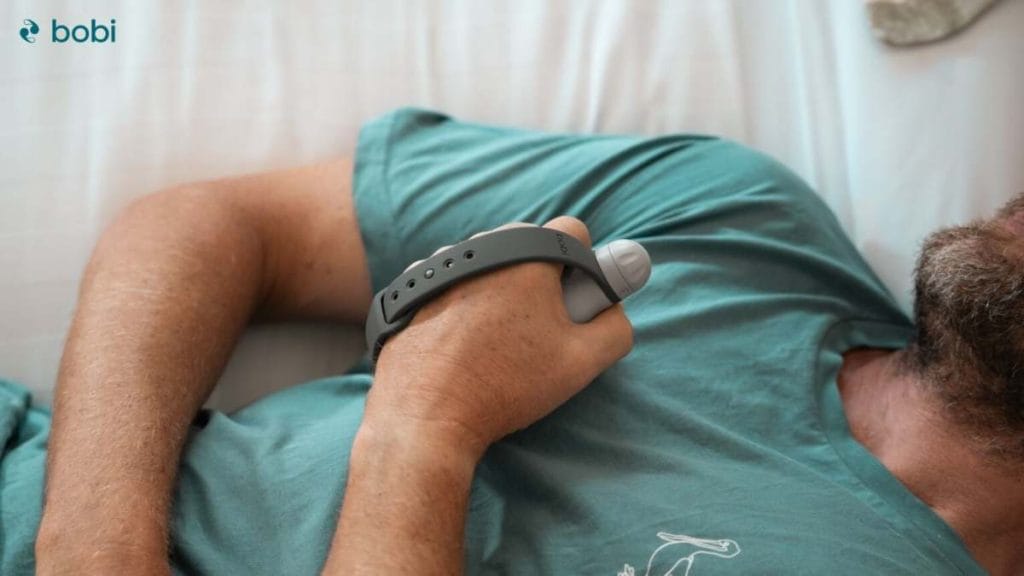
Autism Spectrum Disorder (ASD), encompassing a wide range of neurodevelopmental disorders, is marked by issues in social interaction, communication, and repetitive behaviors. A particular hurdle that individuals with autism often encounter is autism overstimulation. This sensory overload can generate significant stress.
The overwhelmed senses by the environment are known as autism overstimulation. This occurs when children’s brains receive more information from their senses than they can process, resulting in stress and anxiety. Read till the end to learn about Autism over-stimulation in-depth and learn the use of breathing and bobi _ an innovative mindful tool to manage this issue effectively.
Overstimulation in autism frequently occurs when the individual’s brain struggles to process an influx of sensory information. It can come from any sensory channel—sound, sight, touch, taste, or smell—and can create a heightened state of stress and overstimulation anxiety. According to research, overstimulation in autism does not stem from hypersensitivity, but rather from a different mode of experiencing the world.
Overstimulation and the subsequent emotional stress can deeply impact the lives of those with autism. It potentially triggers reactions ranging from minor behavioral disturbances to full autism overstimulation meltdown. Effectively managing overstimulation and stress is crucial to enhancing the quality of life for individuals with autism.
Conscious breathing, the practice of maintaining awareness of and controlling one’s breathing pattern, is an effective strategy to mitigate the effects of overstimulation.
Specifically, maintaining an optimal rate of 5 to 6 breaths per minute can exert a profound calming effect on the body and mind.
Therefore, parents and caregivers can find teaching any child to consciously slow their breathing to be a considerable undertaking. For autistic children who commonly prefer hands-on learning, this can be an even greater challenge. Yet, investing effort to support autistic children in learning to control their breathing might be the best long-term skill for emotional regulation.
Research shows that many autistic children and autism overstimulation adults exhibit dysfunction of the autonomic nervous system, often leading to challenges in emotional regulation due to enduring overstimulation and irritability. The goal of many therapies, including psychology and occupational therapy, is to equip those with autism with the skills and habits to effectively manage emotional responses and overstimulation. Hence, breathing exercises have become a fundamental part of interventions aimed at enhancing self-regulation.
While conscious breathing is an excellent strategy, managing overstimulation and stress in autism often necessitates a multifaceted approach. For instance, dimming lights, lowering noise levels, or using noise-canceling headphones can help manage auditory overstimulation.
Calming devices for autism, such as squeeze items or bobi _a personal breathing coach, have been proven to be effective in managing over-stimulation. Squeezing objects can provide deep pressure input, offering a calming effect on the sensory system, helping to regulate sensory processing, and reducing sensory overload.
There is emerging evidence that suggests that systematically squeezing your hand, an isometric exercise, has significant therapeutic benefits.
Isometric exercise, wherein muscle strength is exerted without joint movement, releases tension, provides sensory input through muscle contraction, triggers the release of endorphins, and depending on which hand is used, stimulates specific areas of the brain.

bobi, a handheld breathing companion designed to help adopt the optimal conscious breathing habit, makes the practice of conscious breathing more accessible, especially for the neurodivergent community. With bobi, users can maintain a slow, measured breathing pace of 5 breaths per minute. By signaling when to inhale and exhale through touch, it helps manage the effects of over-stimulation.
Through conscious breathing, bobi encourages the activation of the parasympathetic nervous system, the body’s natural calming mechanism, counteracting over-stimulation and stress and providing much-needed relief during moments of sensory overload.
Overcoming over-stimulation, a significant challenge in autism is possible. Through the combined power of conscious breathing and isometric hand exercises with calming devices like bobi, individuals with autism can effectively manage overstimulation and the accompanying stress.
The journey to manage overstimulation and stress is unique for every individual with autism. It’s a journey of understanding, patience, and adaptability that promises a better quality of life. So, utilize the benefits of bobi’s unique design to help address overstimulation by getting your bobi from here.

bobi guides the user to maintain an optimal rate of conscious breathing, which can help manage the effects of over-stimulation, offering a calming effect.
Definitely. Regular practice of conscious breathing, especially with bobi, can help manage overall stress levels and improve resilience during stressful situations.
Strategies may vary depending on individual sensitivities. They can range from reducing environmental triggers and using noise-cancelling headphones to creating a safe, calming space at home.
Absolutely. Regular physical activities, maintaining a consistent routine, and engaging in calming activities such as listening to soothing music can all aid in stress management for individuals with autism.
Research:
– Folland, J. P., Hawker, K., Leach, B., Little, T., & Jones, D. A. (2015). Strength training: Isometric training at a range of joint angles versus dynamic training. Journal of sports sciences, 33(14), 1485-1492. https://pubmed.ncbi.nlm.nih.gov/16195033/
– Grandin, T. (1992). Calming effects of deep touch pressure in patients with autistic disorder, college students, and animals. Journal of Child and Adolescent Psychopharmacology, 2(1), 63-72. https://pubmed.ncbi.nlm.nih.gov/19630623/
– Kinnealey, M., Koenig, K. P., & Smith, S. (2011). Relationships between sensory modulation and social supports and health-related quality of life. American Journal of Occupational Therapy, 65(3), 320-327. https://pubmed.ncbi.nlm.nih.gov/21675338/
– Kushki, A., Drumm, E., Pla Mobarak, M., Tanel, N., Dupuis, A., Chau, T., & Anagnostou, E. (2013). Investigating the autonomic nervous system response to anxiety in children with autism spectrum disorders. PloS one, 8(4), e59730. https://pubmed.ncbi.nlm.nih.gov/23577072/
– O’Neill, M., & Jones, R. S. (1997). Sensory-perceptual abnormalities in autism: A case for more research? Journal of autism and developmental disorders, 27(3), 283-293. https://pubmed.ncbi.nlm.nih.gov/9229259/
– Zaccaro, A., Piarulli, A., Laurino, M., Garbella, E., Menicucci, D., Neri, B., & Gemignani, A. (2018). How breath-control can change your life: A systematic review on psycho-physiological correlates of slow breathing. Frontiers in human neuroscience, 12, 353. https://www.frontiersin.org/articles/10.3389/fnhum.2018.00353/full
Stay updated on what's happening at bobi, and all things breathing, anxiety and mental wellness.